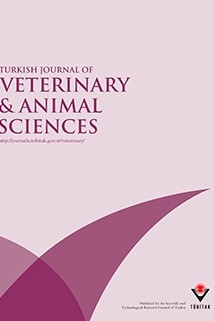
Turkish Journal of Veterinary and Animal Sciences
Yazarlar: Ömer VARIŞLI, Numan AKYOL
Konular:-
Anahtar Kelimeler:Spermatozoa,Oxidative analysis,Homogenization,Methods
Özet: Pretreatment of sperm for oxidative and antioxidative analysis has been shown to be different in studies. These differences can affect the result of analyses. The aim of this study was to compare the analyses of sperm homogenization methods. The semen of four rams were used in the study. Pretreatment procedures included the rotary, bead, and ultrasonic homogenization methods. Oxidative and antioxidative status of sperm samples was assessed by measuring serum lipid hydroperoxide, total oxidant status, free sulfhydryl groups (SH total thiol), ceruloplasmin, and total antioxidant capacity levels. As a result, the homogenization methods before oxidative and antioxidative status analyses significantly affected the result (P < 0.05), and the ultrasonic homogenization method was the most effective. It is recommended to use the ultrasonic homogenization as a pretreatment method to determine the oxidative and antioxidative status analyses in sperm.